Almost three years out of management after he left his last job with Danish side Esbjerg, John Lammers was hired in the summer to lead Heracles Almelo in the Eerste Divisie, with the goal of bouncing straight back up into the Eredivisie. This goal ended up being successful, with the 59-year-old Dutchman guiding the Dutch side to a current standing of second place, only three points back of league leaders PEC Zwolle and already guaranteed their spot back in the top flight of Dutch football next season.
This tactical analysis piece will analyse Lammer’s tactics with Heracles, looking at what has gone so well for them this season, before looking ahead to what they need to do in the summer to preserve their top-flight status for more than one season.
Preferred formation and style of play
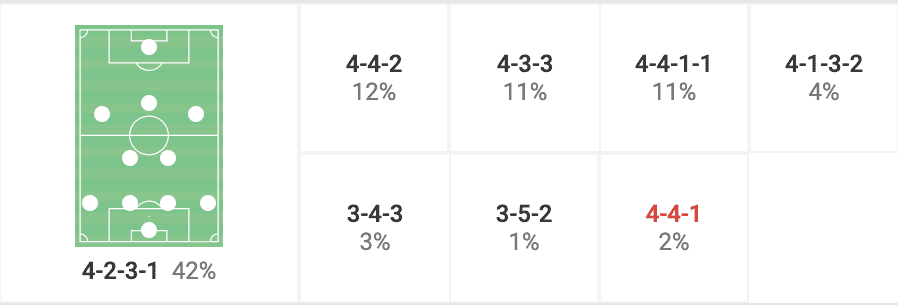
In what is common in Dutch football, Lammers opts to set his Heracles side up in a 4-3-3 formation, with the 59-year-old looking to play very attractive attacking football. However, as the image shows above, this shape normally starts to look like a 4-2-3-1 as the match begins to progress. This formational switch allows Heracles to be more flexible in both the attacking and defensive phases of play.
The Dutch side average 2.7 goals per 90 minutes, while conceding an average of 1.2 per 90 minutes this season, with their 95 goals scored this season the highest total in the Eerste Divisie. They also look to hold the majority of the possession throughout a match, with Heracles averaging 52% possession this season.
As this scout report progresses, we will analyse some of John Lammers’s tactics in more detail, looking at attacking and defensive principles that have brought the Dutch side great success in their season in the second tier of Dutch football.
Heavy use of crossing in the final third
When it comes to how Heracles like to attack under John Lammers, they look to utilise the fullbacks making overlapping runs to provide service into the penalty box. When looking at the crossing statistics of Heracles this season, the Dutch side are the 5th highest crossers in the league, with 661. However, they are the second most accurate side when sending crosses into the penalty area, with their 38.4% accuracy on crosses second to only ADO Den Hag’s 38.6%.
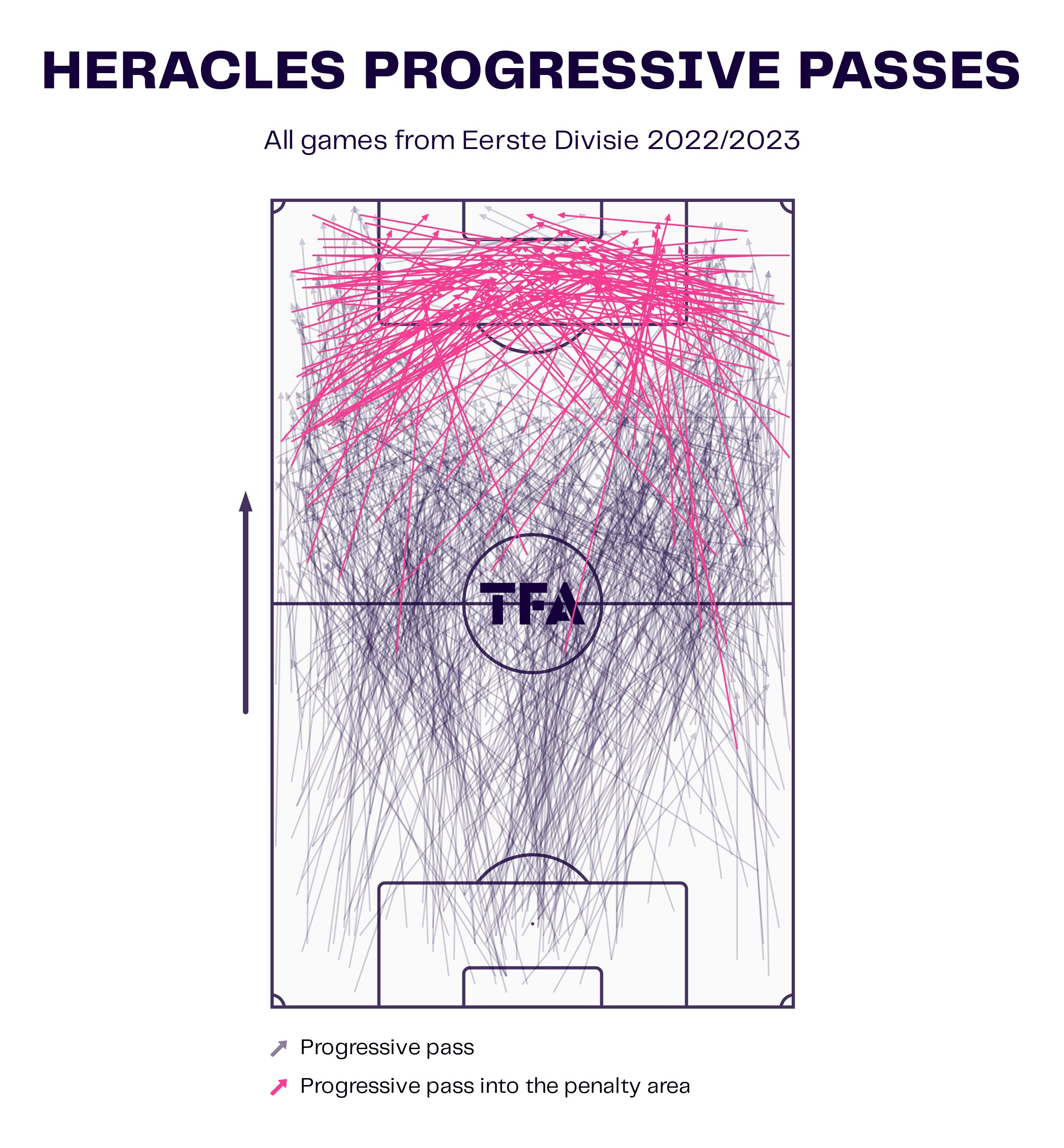
The data viz graphic above shows the total amount of progressive passes that Heracles Almelo have played this season, with the ones highlighted in pink showing progressive passes into the penalty area. As we can see from the graphic, the majority of these passes have been played in from the wide areas, normally from the advancing fullbacks joining the attack, with the wingers/outside midfielders tucking inside to make an attacking line of five when Heracles are progressing the ball into the attacking third of the pitch.
Heracles average just under 19 crosses per game, with a solid number of these per match resulting in chances on goal, or dangerous opportunities. Due to this consistent amount of service from the wide areas, Heracles have also scored 21 goals from headers this season, the highest amount in the Dutch second tier this season.

The image above shows an example of a goalscoring chance that is created from a cross sent into the box from the fullback. In this attacking phase of play from Heracles’s recent Eerste Divisie match against PSV II, the fullback is in possession and sends a cross into the box. The first thing to look at is the box organisation from the Heracles attackers. The Heracles striker, Samuel Armenteros, is able to screen the PSV II centre-back, which prevents him from stepping up and covering the space centrally. This allows the centrally positioned Heracles runner the ability to move into the vacated space by the penalty spot. The forward runner is able to make a run towards the near-post between the screened central defender and the ball-watching defender of PSV II.
The back player is then able to make a run towards the back post, which is where the cross ends up going. The ensuing cross reaches this player, who is able to get a shot on target which forces the goalkeeper into a save. This goal-scoring chance came about as a result of the good layering of runs that Heracles made into the penalty box, which allowed players to be at every zone the cross could have landed inside the area.
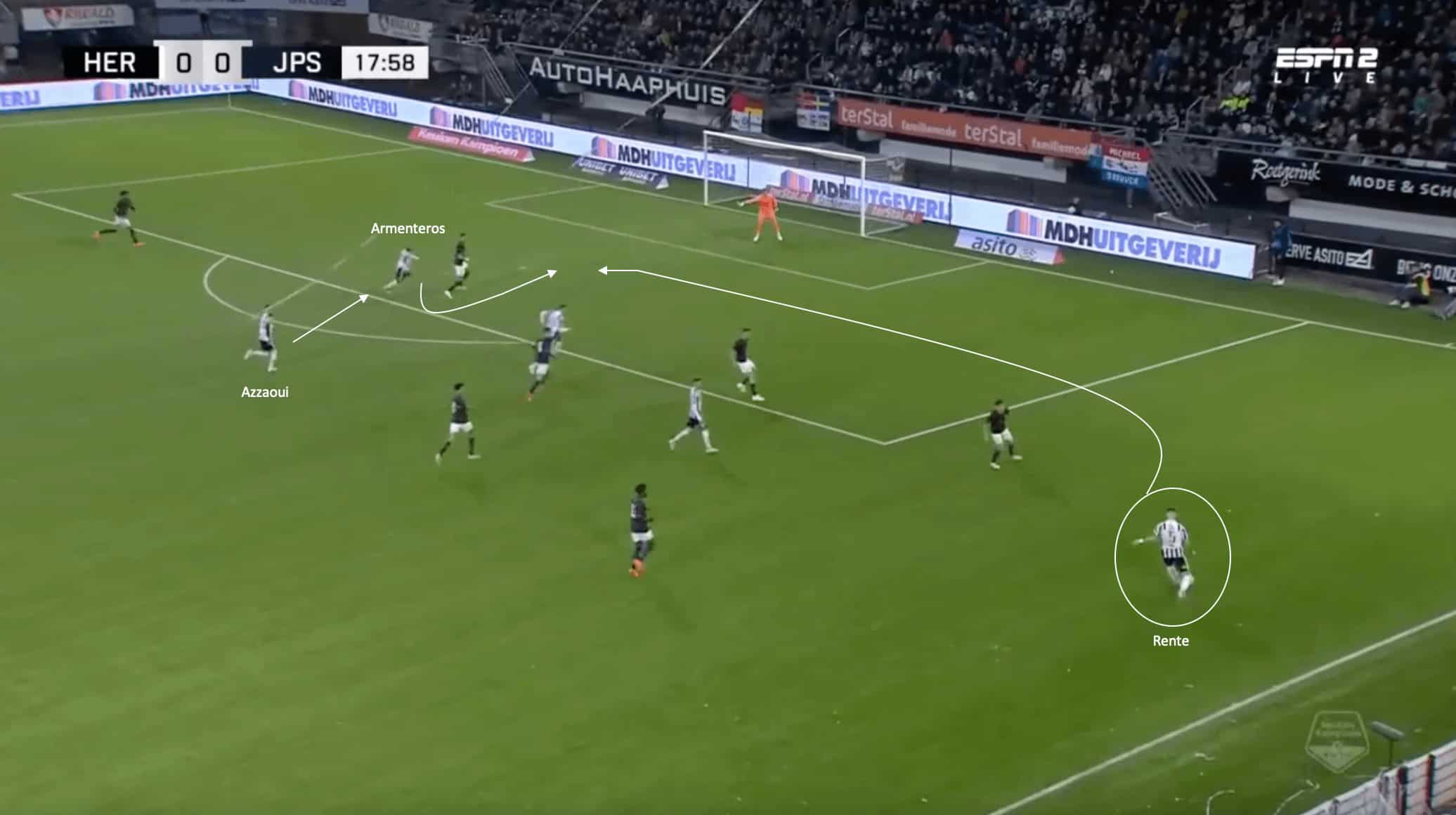
This example of Heracles’s chance creation ability from crosses into the box is actually a two-part example, with the first image shown above. In this phase of play above against PSV II, the Heracles right back, former Borussia Dortmund player Marco Rente, has advanced into the final third, with the wide midfielder tucking inside to keep the opposing defence more narrow. This allows Rente the time and space to send a cross into the box towards the run of the striker, Samuel Armenteros. The 32-year-old is able to get in front of the defender, giving him the advantage to win the initial ball sent into the box. Also, another thing to note is the late run from deep of midfielder Ismail Azzaoui.
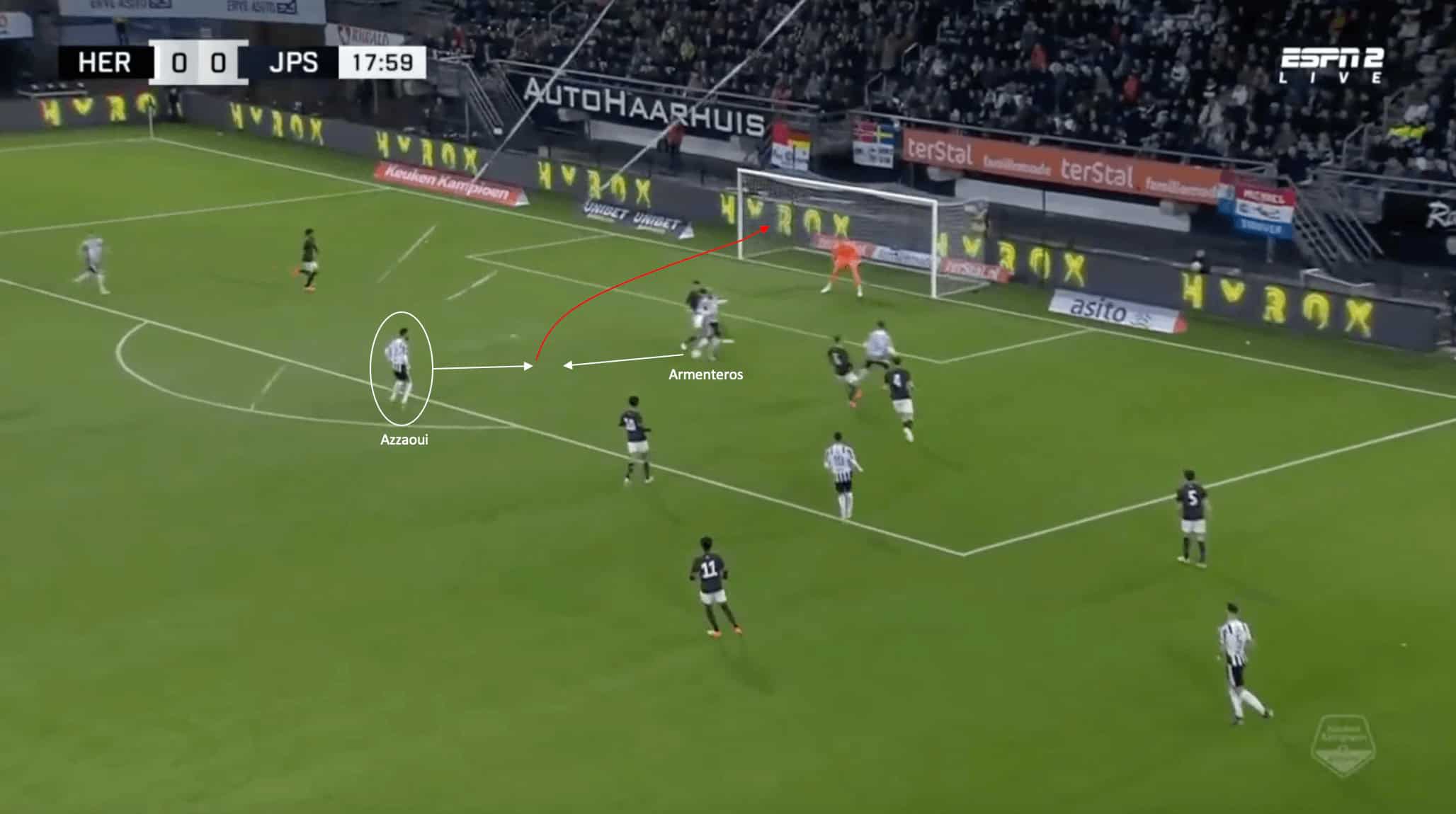
The image above shows the second phase after the cross is sent into the box towards Armenteros. Since the 32-year-old striker was able to get in front of the centre-back, when the cross reaches him, he is able to get a foot on it and send it into the path of the onrushing Azzaoui. Since the 25-year-old Belgian midfielder made a late run into the box, he was left completely unmarked, with him able to take a touch to settle it before firing the ball past the goalkeeper and into the back of the net.
Though this was not a headed goal from Heracles on the initial ball into the box, it shows they are also able to excel in the second phase after the ball is sent into the box, with this likely coming down to both Lammers’s principles on the training ground when focusing on the attacking side of the game, as well as the off the ball movement and positioning of the Heracles players in these phases of play.
The crossing ability of the wide players also has an impact on this attacking style from Lammers, with Heracles having the second-best crossing accuracy in the Eerste Divisie this season, as already previously mentioned.
Looking to regain possession in advanced areas
Another principle that John Lammers has implemented in his Heracles side is their tendency to press high, with the Dutch side looking to regain possession in advanced areas of the pitch. In the Eerste Divisie this season, Heracles have the third-highest PPDA of any side, with their 9.35 PPDA behind only Almere City and league leaders PEC Zwolle.
They also have faced the third-fewest shots in the Eerste Divisie this season, with 339 against them. This highlights their ability to win the ball back in more advanced areas often, with Heracles not allowing their opponent many opportunities on goal. This can also be attributed to the defensive duels of John Lammers’ side, with Heracles having the most defensive duels in the Dutch second tier this season, with 2,928 committed and a 64.2% success rate.
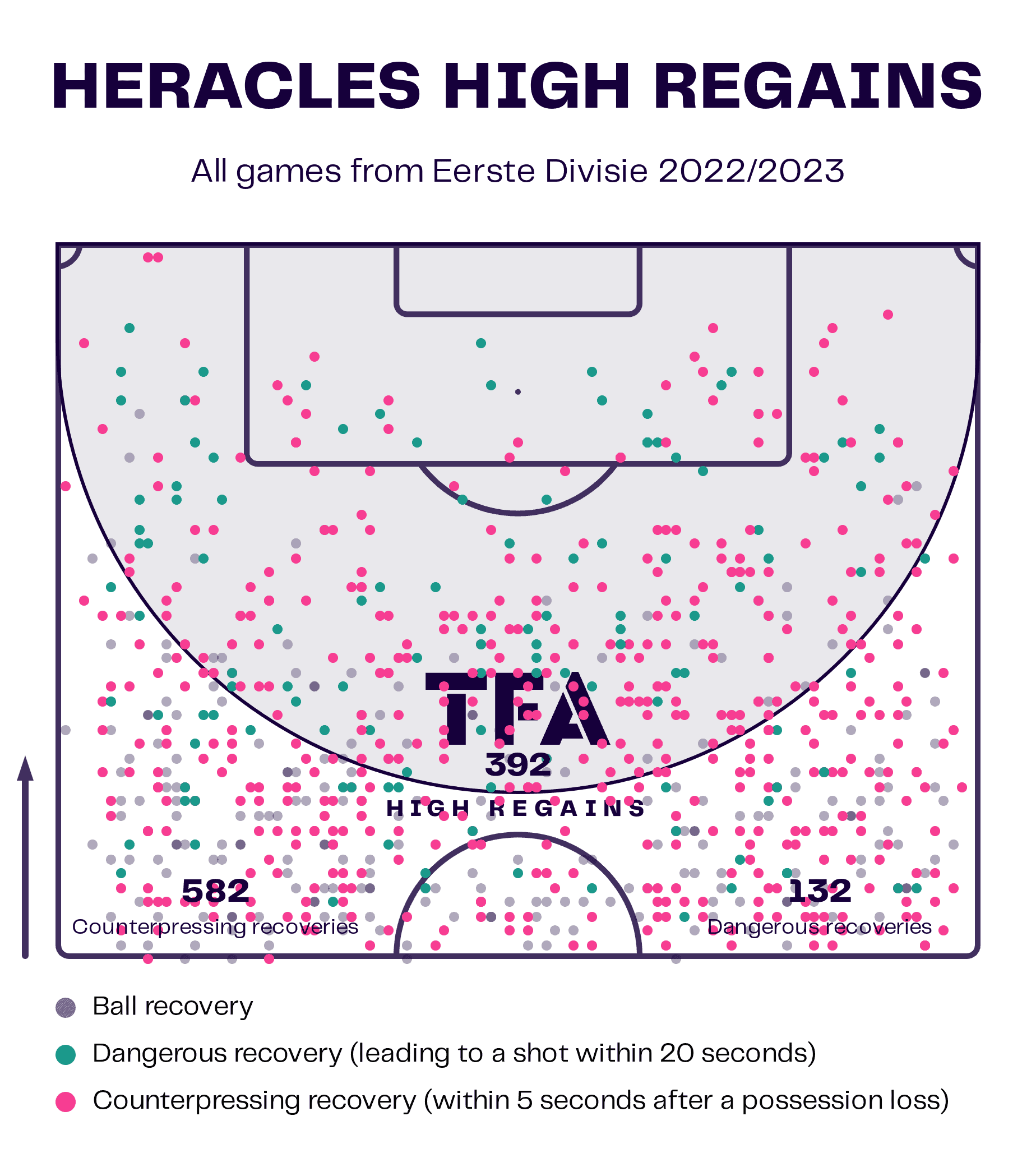
The data viz graphic above shows the high regains of Heracles Almelo this season in the Eerste Divisie. As we can see, the Dutch side have had 392 high regains, along with 582 counter-pressing recoveries and 132 dangerous recoveries. Under John Lammers this season, Heracles have very much become a counter-pressing side, with their success at it leading to them not allowing many shots on their goal from the opposition.
Just like we mentioned earlier, Heracles are the side with the third-best press in the Dutch second tier this season, behind only Almere City and Dick Schreuder’s PEC Zwolle.
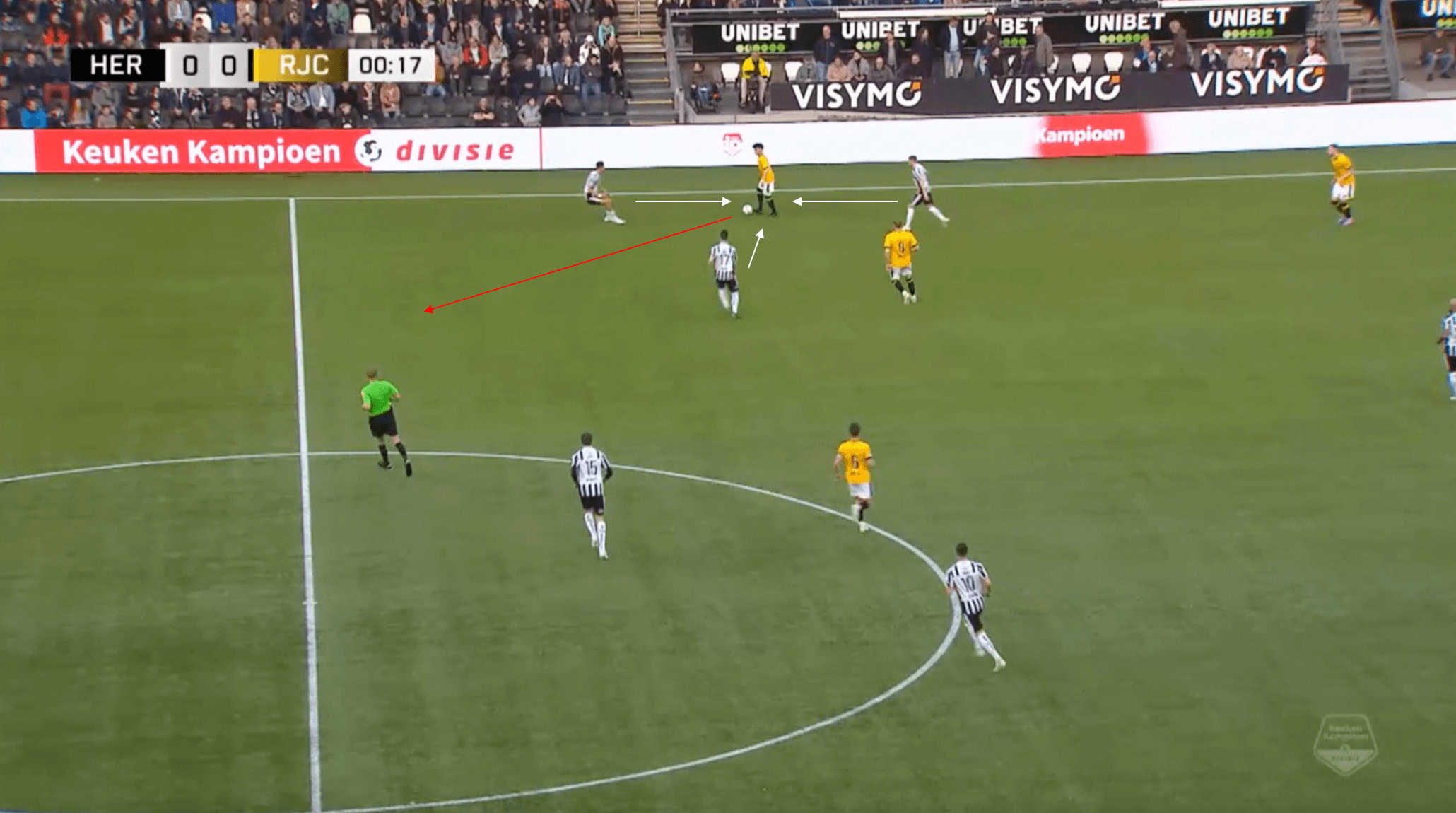
The image above shows the first part of a pressing sequence from Heracles. In this phase of play above, the match has just kicked off against Roda, with Heracles looking to instantly put pressure on the ball in the opposition’s half from kick-off. When the ball is played wide to the player on the far touchline, the nearest Heracles players all close him down from different angles, looking to trap the ball to one side. The only passing option for the Roda player is to play it into a central area, which he does.
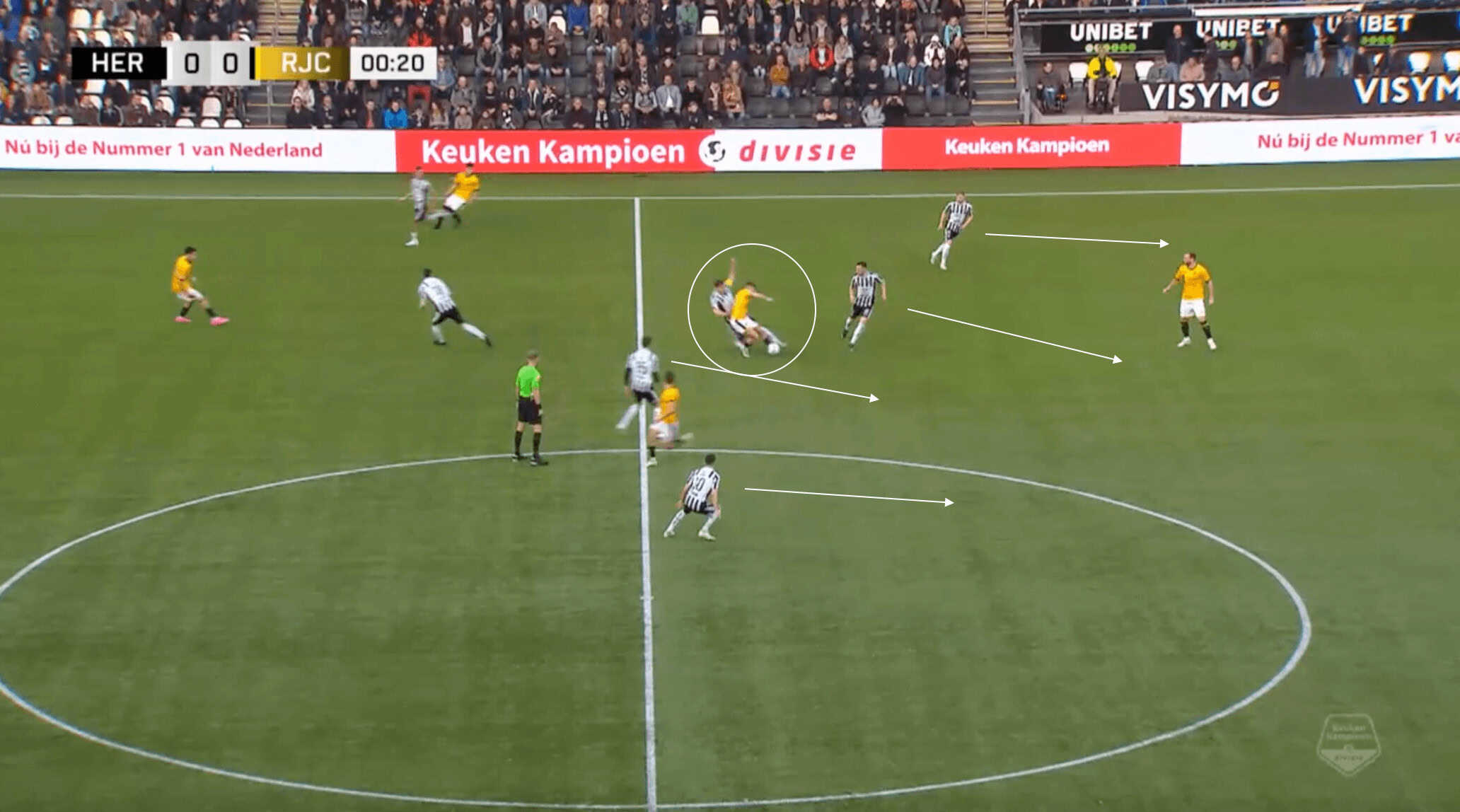
The image above shows the second phase of the Heracles press after the ball is played into the central area by the Roda player. The ball is able to find another Roda player who tracks back, but he is instantly closed down from behind by Heracles, with them winning back possession and already having numbers committed forward for a counterattack.
As we can see, there are already four Heracles players positioned in advanced areas beyond the ball, which is a tendency for Lammers’s side, and which also allows them the ability to counter efficiently and dangerously at times when they are successful with regaining possession in these advanced areas of the pitch.
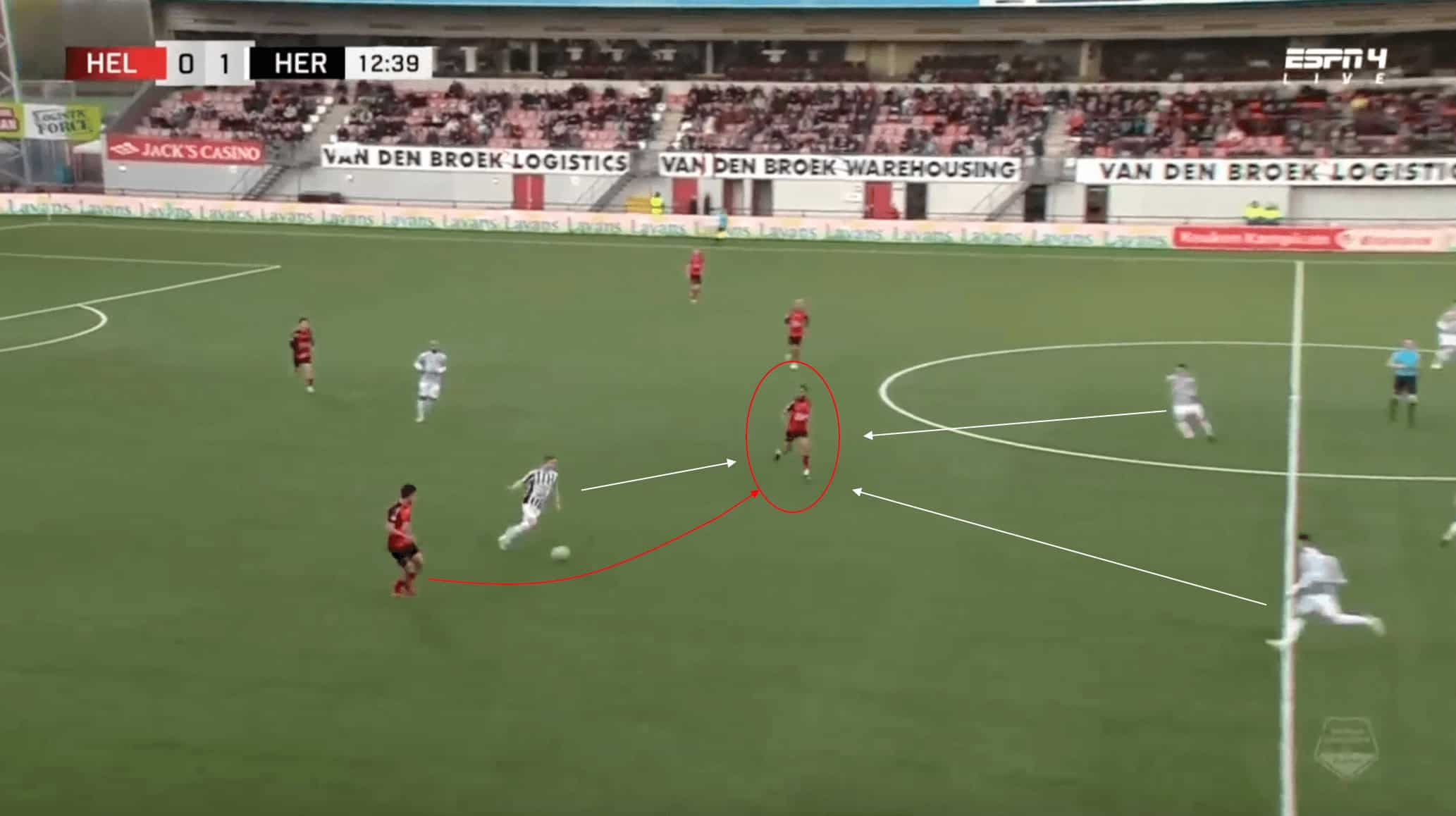
The image above shows a similar pressing situation from Heracles like in the other example. In this phase of play above against Helmond Sport, the opposition are again baited into playing the ball into the central area, with the Heracles pressure jumping on the opportunity. As the ball is played into what looked like the vacant central space that the Helmond Sport midfielder is running into, the three closest Heracles defenders instantly close him down. As the ball reaches him, he is put under instant pressure, with the ball turned over in an advanced area for Heracles to recover.
As this section has shown, under John Lammers, Heracles Almelo have been able to also press to great effect this season, with this resulting in plenty of turnovers in advanced positions. Their ability to quickly close down space and put the opposition under immediate pressure when the opposition are playing the ball in central areas has also worked well, something that Lammers will hope can be replicated in their Eredivisie campaign next season.
Where can the squad be improved for next season?
This final section will take a little look at the Heracles Almelo squad going into next season, and analyse where they could potentially improve to prevent them from being in trouble of being relegated back to the Eerste Divisie again next season.
One thing that Heracles will for sure need to do this summer is add depth to their attack, with their main source of goals coming from the three starters. Between the starting front three, they have a combined 47 goals, with not many coming from options in these positions off the bench. However, one interesting backup striker that Heracles bought in January could be one to watch for them next season.
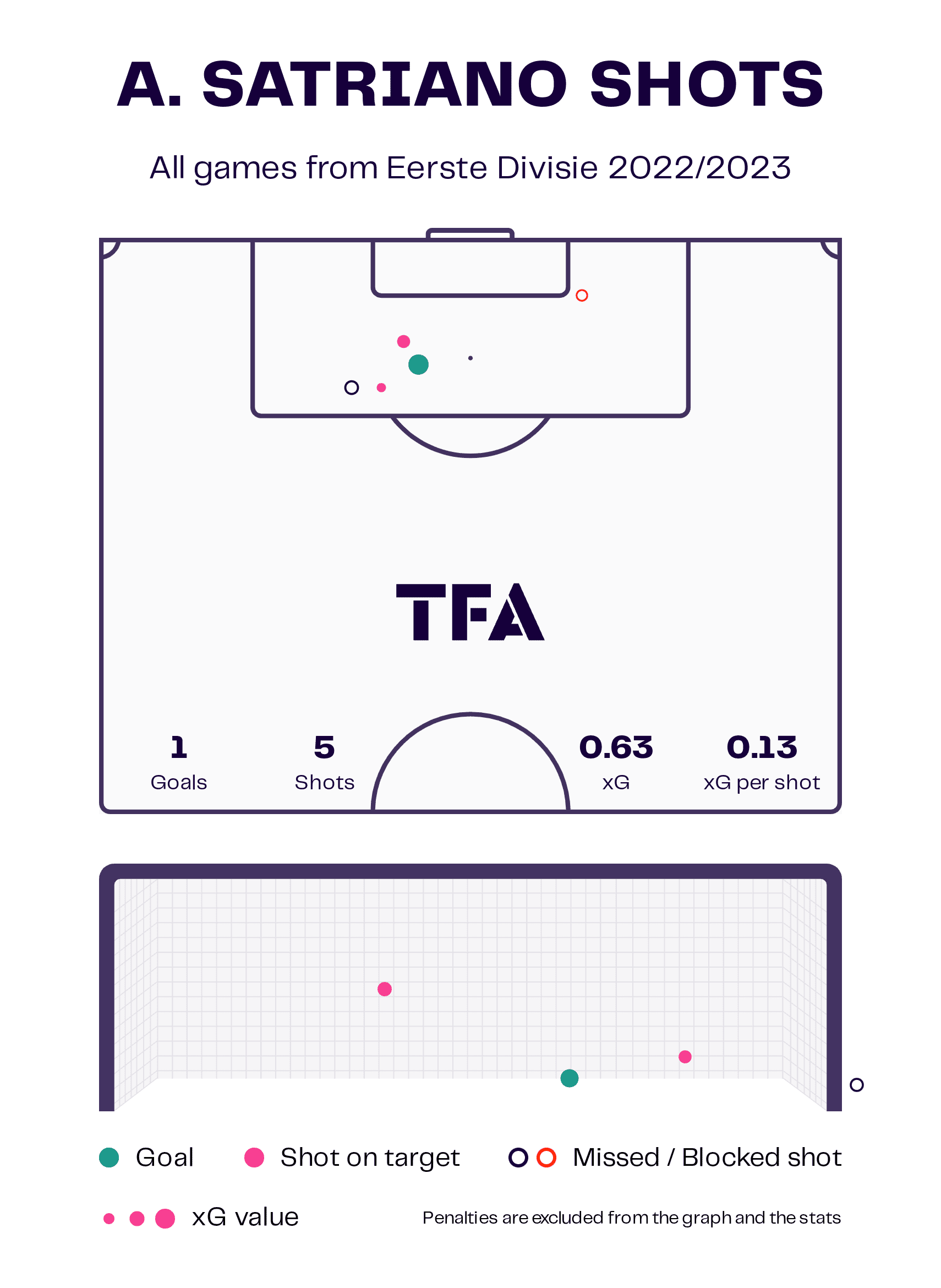
The player mentioned is 19-year-old former Roma striker, Antonio Satriano, with the Italian striker bought by the Dutch club in January and likely playing a key part in their Eredivisie return next season. The only question will be whether Satriano is ready to step in and start straight away, with his seven appearances so far this season resulting in only one goal.
The core of the squad is very good and they have had a spectacular season in the Eerste Divisie this season, but the step-up could be tough initially for some of the younger members of the squad, like Satriano.
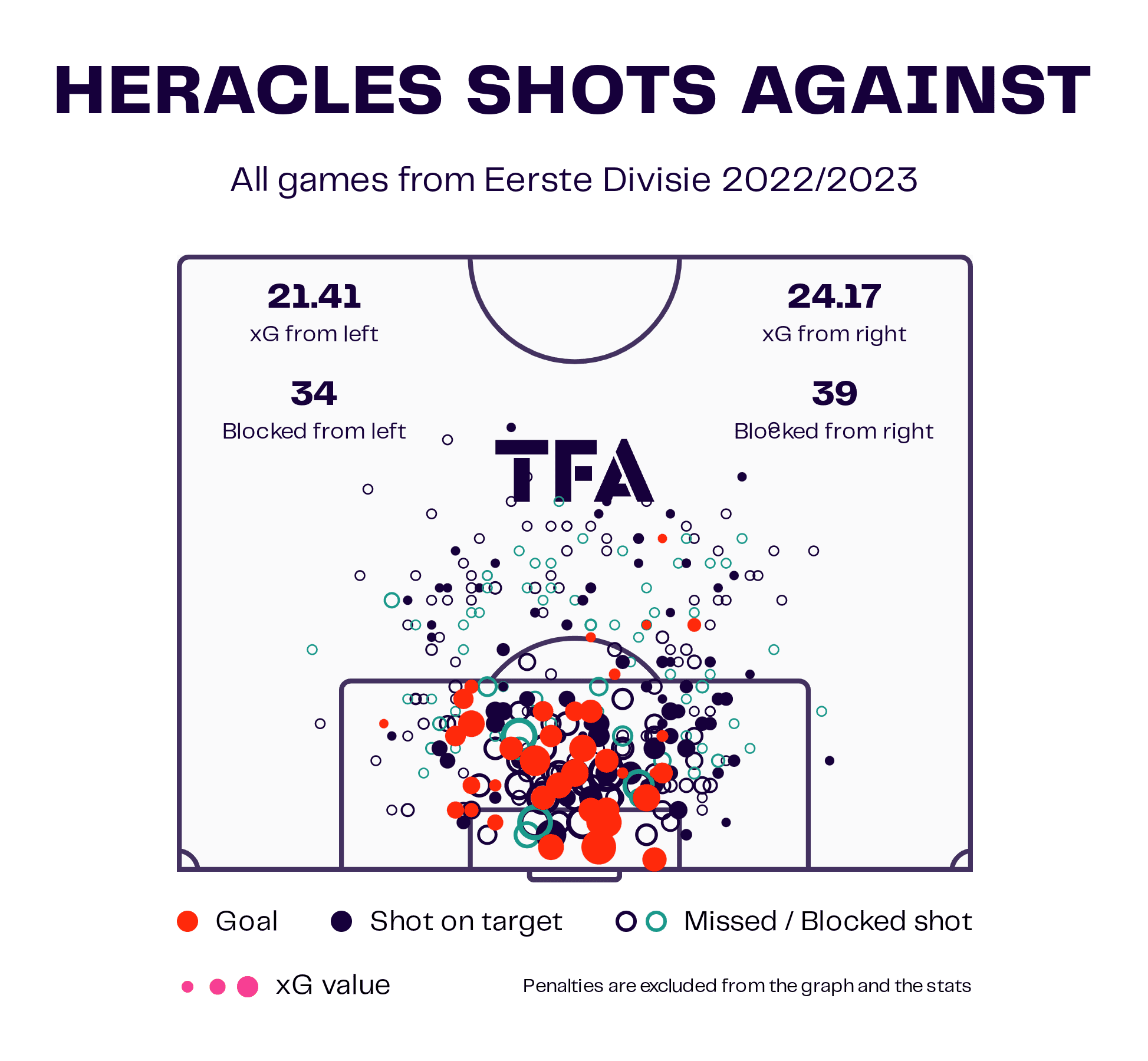
It probably would not be the worst idea for Heracles to add some more experienced players to the playing squad next season, ones that preferably have played in the Eredivisie before. Along with adding depth up top, looking to add experience wherever possible could be helpful, especially in defence.
The data viz graphic above shows the shots against Heracles this season, as well as the xG value of the shots they faced. From a statistical perspective, Heracles have conceded 41 goals so far this season, a total that would not put them nearly as high up the table as they sit right now.
It is unlikely they will replicate their attacking success next season in the Dutch top flight, so strengthening a defence that was weaker than the other top teams should also be a priority for Heracles this summer transfer window.
Conclusion
As this tactical analysis and scout report has highlighted, John Lammers has done a tremendous job leading this Heracles Almelo side this season, with them already guaranteed promotion back to the Eredivisie, as well as still being in with a shout at the title.
The tactics that he has implemented in the side have worked to great success, but the squad definitely needs to be strengthened going into the Eredivisie next season, especially when they go back to playing the likes of Ajax and Feyenoord.





Comments